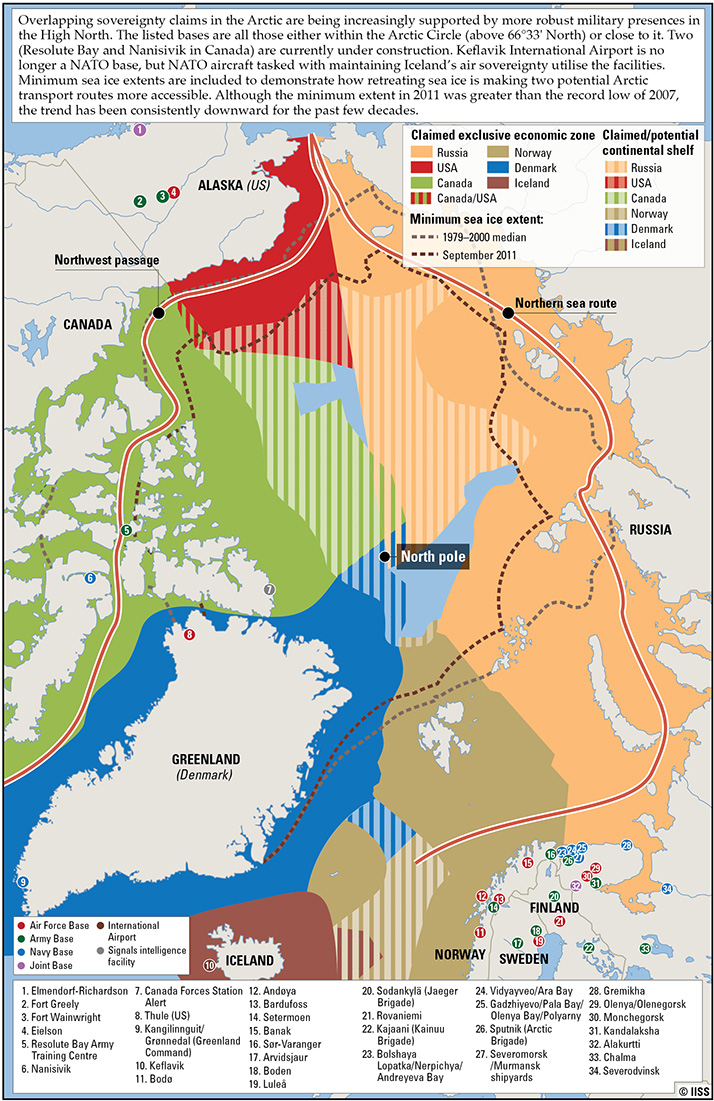So, who has the rights? Unlike Antarctica, which is governed by an international treaty, the eight countries that circumscribe the region--Russia, Finland, Sweden, Norway, Iceland, Denmark (because of Greenland), Canada, and the US--currently have a claim to the frontier. However, these countries have grown more assertive lately, increasing military exercises and even re-opening Cold War era bases. Experts project that over $100 billion over the next decade will be invested in the region. This is an unprecedented level of investment that will be funneled primarily into basic infrastructure that will be capable of supporting the extraction of the resource wealth.
For the US particularly, it is grappling with how to handle the myriad of issues surrounding the contentious Arctic--even rules of engagement with the endangered polar bear. The past year has seen a number of publications tackling the strategies and outlook for the northern territory, including the Department of Defense's Arctic Strategy and the White House's National Security Strategy for the Arctic Region. Most recently, in February, the US Navy released its Arctic Roadmap for 2014-2030 that outlines naval preparations for the region. The US is definitely not alone in trying to come to terms with the increased traffic of commercial and military vessels as well as drilling and mining activities. With the unpredictable rate that climate change has affected the Arctic nation's are consumed on how to best approach this in flux region. What is a plus to this quickly-changing terrain is that the Arctic Council has been and will continue to be critical in ironing out disputes and issues in the region that are bound to get even more complex. In short, the biggest problem will come down to money, and how each nation will try and protect its interests. It is pertinent that the levels of cooperation remain cordial, otherwise the area that is already suffering will stand to endure greater tragedy if chaos were to ensue.







No comments:
Post a Comment